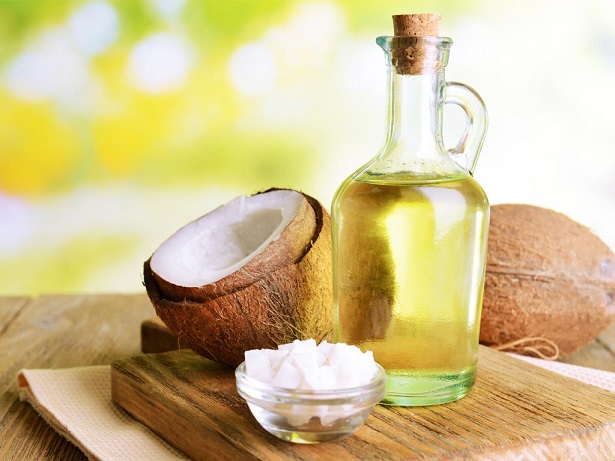Coconut oil offers many health benefits, and it has finally started getting the kind of attention it really deserves. People have been avoiding it for long considering it offers saturated fat, but they have now started thinking differently mainly due to its health benefits. Mature coconut meat is used to extract coconut oil, and it can be both refined and unrefined. Including coconut oil in your diet offers benefits, but can you fry with coconut oil?
Frying with Coconut Oil, Is It a Good Idea?
It certainly is. Coconut oil is actually a great choice for deep-frying, mainly because it can withstand high cooking temperatures with ease due to its high concentration of saturated fat. It is equally suitable for baking, sautéing, and roasting.
.jpg)

Smoking Point
The smoking point refers to the temperature at which the impurities in the oil begin to burn. It means you should avoid using oil with a lower smoking point for high-temperature cooking. Coconut oil is good in this regard since it has a smoking point of 400F – that is for refined coconut oil; unrefined coconut oil has a slightly lower smoking point (350F).
Frying Temperature
You usually require an oil temperature of anywhere between 325F and 375F for pan frying and deep-frying. You do not usually need a very high temperature for stir-frying; in fact, the temperature can be around 284F. What that means is that you can easily use both refined and unrefined coconut oil for stir-frying as well as pan-frying.
Refined vs. Unrefined Coconut Oil, Which One to Use?
As you may have gathered already that frying with coconut oil is a good idea, you may still be thinking if you should use refined coconut oil or opt for unrefined coconut oil. There certainly are some subtle differences that you should consider before making a choice.
Processing
- Refined: When bleached and deodorized, coconut oil becomes 'refined' coconut oil. Since it is obtained from dried coconut meat, it is considered a good idea to purify it with bleaching clays to get rid of any contaminants. The oil also has to withstand high heat, which is to remove its distinctive flavor and odor. Sometimes, sodium hydroxide is introduced to help improve the shelf life of coconut oil.
- Unrefined: Often referred to as 'pure' coconut oil, unrefined coconut oil is obtained from fresh coconut meat. It usually does not undergo many processes. It may undergo a process called quick drying in which the coconut meat is dried up quickly and then the oil expressed mechanically. Wet milling is another process used in some cases, and the resulting oil usually requires no additives or bleaching.
Flavor and Odor
- Refined: Refined coconut oil may contain trans-fats as well. That happens when some companies partially hydrogenate the oil. You should avoid trans-fats because they lower good cholesterol levels and increase bad cholesterol at the same time.
- Unrefined: The oil is not exposed to high heat and is usually free of trans-fats. It also retains its flavor and odor.
Nutrients
- Refined: Refined oil contains many nutrients but it is not that rich in phytonutrients. It may not contain enough polyphenols because it undergoes the bleaching and heating process that damages these polyphenols.
- Unrefined: It makes greater sense to use unrefined coconut oil when you want to enjoy the benefits associated with polyphenols. Those nutrients stay intact because unrefined oil does not have to undergo any heat or bleaching treatment.
Both unrefined and refined coconut oil have medium-chain fatty acid, also called lauric acid, which offers numerous health benefits. It also has antibacterial, antiviral, immune-boosting, and anticancer properties.
Which One to Use?
However, if you have to make a choice between the two, you will be better off opting for unrefined coconut oil. In case you really want to use refined coconut oil, mainly because it has a higher smoking point, you should look for brands offering oil with the least amount of chemicals and additives. Also, ensure the oil is not partially hydrogenated.
How to Fry with Coconut Oil
Coconut oil is a good alternative to olive oil and vegetable oil when frying your favorite food and that is mainly because of its high smoking point. When frying with coconut oil, you need to know how to proceed properly to get perfect results. Here are the steps to follow:
- Get a deep fryer and fill it up to the fill line. Set the temperature between 325F and 375F. Make use of a candy thermometer to ensure the temperature is correct.
- Let the fryer heat up while you prepare your food for frying. You do not need to coat your sweet potato fries, but some foods like fried chicken, jalapeno poppers, etc., may require batter or breading.
- Place your prepare food in the fry basket and lower it with care. The fry time depends on what you are trying to make, but you can cut into one piece to ensure if it is ready.
- Get a plate and line it with paper towels. Now, get your fried food out and place it on the plate. Those paper towels will help absorb the excess oil.
Foods Suitable for Frying with Coconut Oil
You can fry a variety of foods using coconut oil. Using unrefined coconut oil is always a better choice as it is a natural fat and is lactose free. Some of the best food options include pancakes, eggs, fish, and meats, such as chicken, beef, duck, and lamb. You can also fry vegetables such as peppers, garlic, onions, and potatoes.
